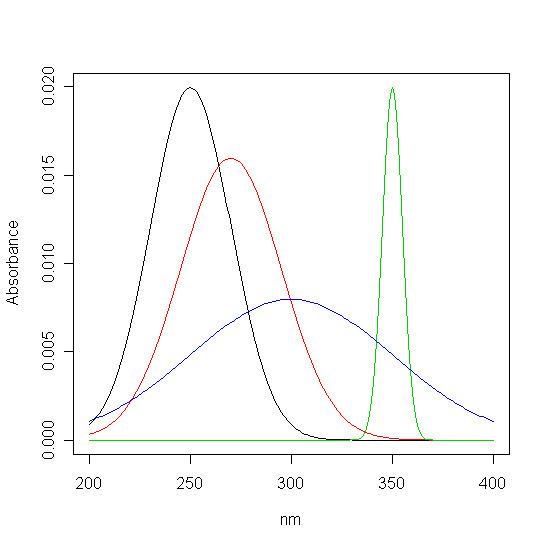 | ||
LBOZ is a coefficient used in spectrophotometry to estimate selectivity (amount of overlapping of spectra) in a quantitative manner. It is named after its creators: Lorber, Bergmann, von Oepen, and Zinn.
Contents
Definition
Let
where
Properties
The image above show synthetic gaussian spectra. The LBOZ criteria are: 0.561 for black compound, 0.402 for red compound, 0.899 for green and 0.549 for blue. LBOZ always lie in range <0,1> and has strong mathematical sense - it presents the amount of spectral signal which is not overlapped by the others. Hence, the uncertainty of a compound quantity increases by
